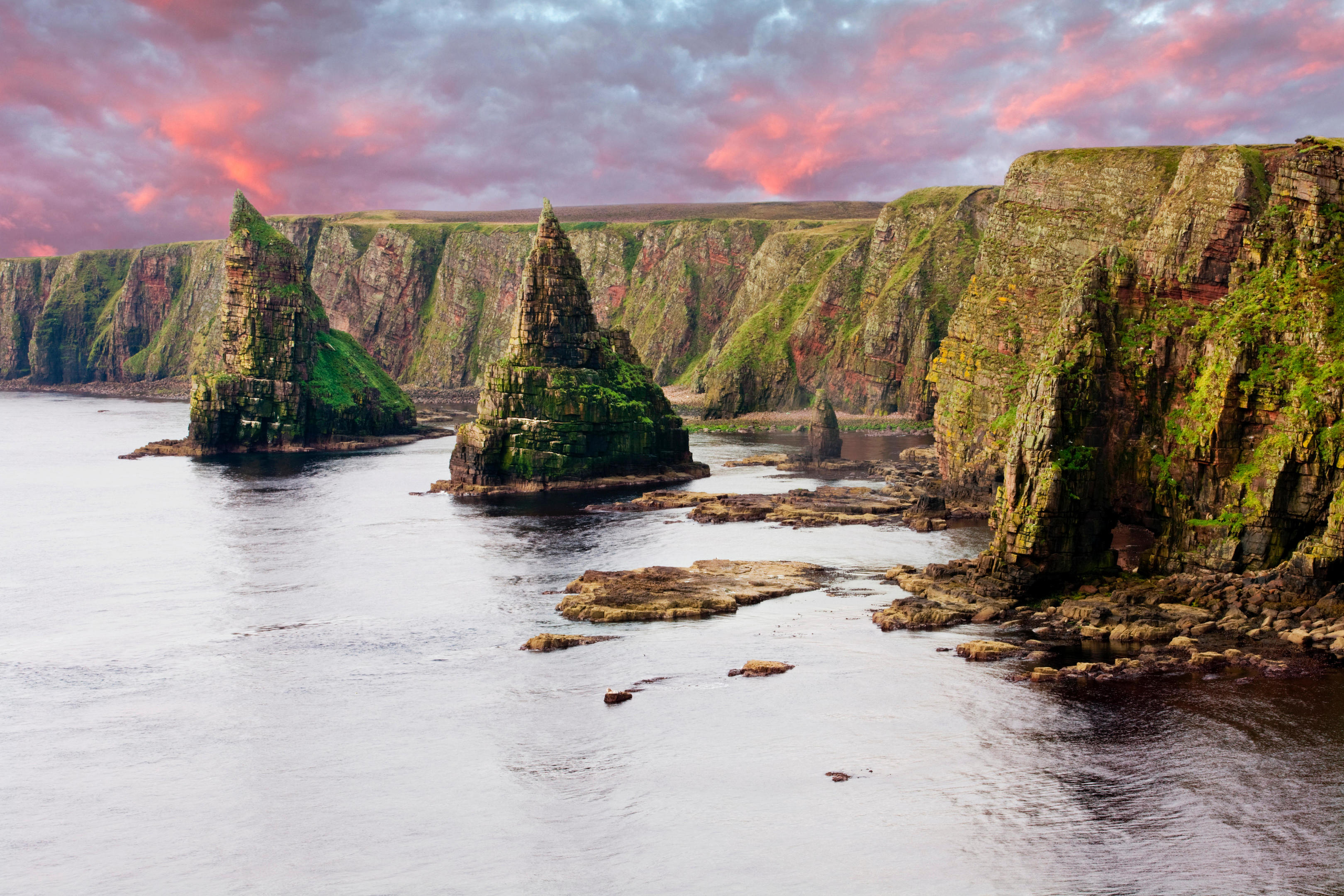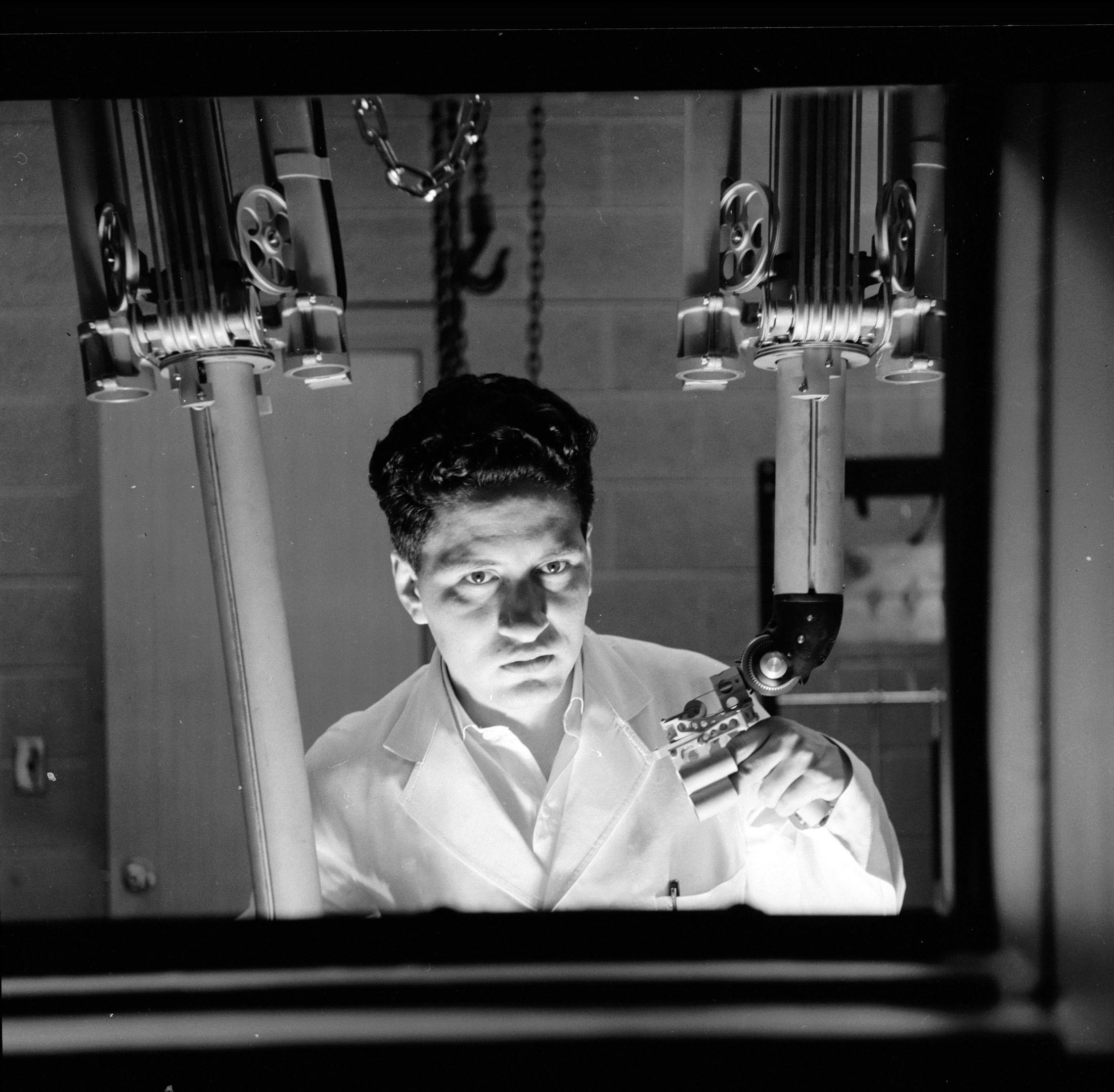
THE North Coast 500, Scotland’s answer to America’s Route 66, is rated by top travel magazines and writers as one of the five best coastal drives in the world.
One of its must-stop-off highlights is the Stacks of Duncansby – the jagged rocks just off the most north-easterly tip of the mainland.
But motorists, bikers and cyclists are lucky to be seeing the jaw-dropping scene at all.
For The Sunday Post can reveal that experts wanted to blast the stacks with a nuclear bomb back in the 1950s.
Incredibly, the iconic landmarks were only saved because scientist decreed the area was “too wet” to set off the explosion.
The nightmare bomb scenario was dreamt up by boffins at Aldermaston, the secretive headquarters of the UK’s nuclear weapons programme, in rural Berkshire.
Local community councillor Bill Mowat said the fact the test was even mooted by scientists is terrifying.
He said: “I know there were concerns that Wick might have been in the firing line from fallout.
“It seemed incredible then and it seems incredible now.
“It’s really hard to believe Aldermaston could even think about this worst-case scenario.”
Back in 1953, as Britain desperately tried to keep up with America and Russia in the nuclear arms race, experts at Aldermaston wanted to test a prototype nuclear bomb at the landmark spot.
Looking at a map of the British Isles, Caithness would have seemed like the ideal spot for such an experiment.
Indeed, there was already a precedent – the remote Gruinard Island in the Inner Hebrides had already been used as a testing ground for the lethal anthrax bacterium in 1942.
It had been left uninhabitable by biological warfare testing carried out by scientists from Porton Down.
So blowing up a picturesque stretch of Scottish coastline would not have seemed beyond the realms of possibility to academics locked in a cold war race for nuclear knowledge.
Even before Dounreay Nuclear Power Station was built between 1955 and 1958, “because there were so few people there”, scientists had earmarked Caithness, with its sparse population, as a nuclear test bed.
The nightmarish idea to blow up the Stacks of Duncansby came the year after Operation Hurricane in 1952 when Britain detonated its first atomic bomb at Montebello Islands, West Australia, just three years after the Soviet Union set off its first nuclear bomb.
The bomb planned for Caithness would not have been a slick weapon with pointed nose cone and fins, it would have been cobbled together, the size of a kitchen freezer, and set on top of the tallest of the Stacks.
It might have looked like a
low-tech, rickety invention but it would have packed a punch on par with the US atom bomb which obliterated Hiroshima in August, 1945 – the equivalent of 16,000 tons of TNT.
Nuclear analyst John Large said: “I know they planned to pop a couple off in Scotland but I thought it was called off for political reasons as being a step too far. I didn’t realise it was because of climate conditions.
“It would have been what’s called a tower shot. Normally it would have been on a tower about 150-200 feet above ground level.”
Former UK Atomic Energy Authority expert John Large revealed just why the weather was not suitable for nuclear bombs.
He said: “If there is a lot of mist or low cloud about that would cause problems with their electronics.
“Even in those days they were quite sophisticated. ‘Too wet’ was probably referring to cloud cover that would interfere with the firing devices they used to set off the explosive charges. That’s probably why they scrapped it.
“If they had detonated it there would be a large area of radioactive contamination and you would still be cautious about going into that area.
“If they had gone ahead with their madcap scheme it wouldn’t be a tourist attraction today.”
After the damp halted the Scottish explosion, scientists turned their attention to Donna Nook in Lincolnshire before settling on Skipsea, between Bridlington and Hull, as their preferred test site.
But there was outrage in Parliament and the plan was scuppered.
The bomb test was eventually carried out in late 1953 at Emu Field, a desert area in South Australia.
READ MORE
Reactor shut down at Torness nuclear plant
Fancy owning a nuclear bunker? It’s yours for just over £500,000

Enjoy the convenience of having The Sunday Post delivered as a digital ePaper straight to your smartphone, tablet or computer.
Subscribe for only £5.49 a month and enjoy all the benefits of the printed paper as a digital replica.
Subscribe